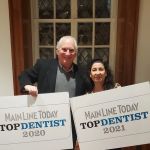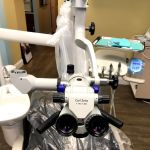Understanding Tooth Wear Causes and How to Prevent It
- 1. What is Tooth Wear?
- 2. Common Causes of Tooth Wear
- 3. How to Prevent Tooth Wear
- 4. The Impact of Poor Tooth Care on Tooth Wear
- 5. When to See a Dentist for Tooth Wear
- 6. Conclusion and Recommendations
1. What is Tooth Wear?
Tooth wear refers to the gradual loss of tooth structure caused by external forces or natural processes. Over time, factors such as chewing, grinding, and exposure to acidic foods can erode enamel—the outer layer of your teeth—leading to changes in the appearance and functionality of your teeth. Unlike cavities, which are caused by bacterial infection, tooth wear is typically a result of mechanical, chemical, or biological factors acting on the teeth. Understanding the causes and prevention methods of tooth wear can help you maintain optimal oral health and prevent more severe dental problems in the future.
2. Common Causes of Tooth Wear
Several factors contribute to tooth wear, each affecting the teeth in different ways. Below are the primary causes of tooth wear:
- Bruxism (Teeth Grinding): One of the most common causes of tooth wear is bruxism, a condition where individuals unconsciously grind or clench their teeth, especially during sleep. This habit can cause significant enamel erosion over time, leading to flattened, worn-down teeth.
- Acid Erosion: Frequent consumption of acidic foods and drinks, such as citrus fruits, soda, and wine, can erode tooth enamel. Acidic substances soften the enamel, making it more susceptible to wear from regular chewing and brushing.
- Age: As you age, your teeth naturally undergo some wear and tear. The enamel naturally wears down, especially in areas where teeth come into contact with each other. This is a normal part of the aging process, but the extent of wear can be influenced by other factors.
- Dietary Habits: A diet high in sugary, sticky, or acidic foods can contribute to tooth wear. Sugary foods foster the growth of bacteria in the mouth, while acidic foods weaken the enamel, making it more prone to damage.
- Improper Brushing Techniques: Using a hard-bristled toothbrush or brushing too aggressively can lead to enamel erosion. Over time, this can result in noticeable wear along the gumline and the surface of the teeth.
3. How to Prevent Tooth Wear
Preventing tooth wear involves adopting good oral hygiene habits and lifestyle changes to protect your enamel from damage. Below are effective steps to help prevent tooth wear:
- Use a Soft-Bristled Toothbrush: Brushing with a soft-bristled toothbrush and using gentle brushing techniques can help prevent enamel erosion caused by harsh brushing. Always brush in circular motions rather than back-and-forth strokes to minimize wear on your enamel.
- Wear a Nightguard for Bruxism: If you suffer from teeth grinding (bruxism), using a nightguard is essential. A custom-made nightguard can protect your teeth from the pressure caused by grinding and help prevent enamel loss over time.
- Avoid Acidic Foods and Drinks: Reducing your intake of acidic foods and beverages is crucial in preventing tooth wear. If you do consume acidic items, make sure to rinse your mouth with water afterward to neutralize the acid and protect your enamel.
- Maintain a Balanced Diet: Eating a diet rich in calcium, vitamin D, and other nutrients helps keep your teeth strong and resilient. Dairy products, leafy greens, and fortified foods can support enamel health and prevent excessive wear.
- Regular Dental Checkups: Regular visits to your dentist can help monitor the health of your teeth and detect any signs of wear early. Dentists can provide personalized recommendations to address tooth wear and may recommend fluoride treatments or dental sealants to protect enamel.
4. The Impact of Poor Tooth Care on Tooth Wear
Poor oral care habits can have a significant impact on tooth wear. If tooth wear is left unchecked, it can lead to a variety of dental problems, such as:
- Increased Sensitivity: As enamel wears down, your teeth may become more sensitive to hot, cold, or sweet foods and drinks. This sensitivity can make it difficult to enjoy certain foods and affect your overall quality of life.
- Cavities and Decay: Tooth wear can lead to the exposure of the dentin beneath the enamel, increasing the risk of cavities and decay. Once the protective enamel is worn away, the tooth becomes more vulnerable to bacterial infection.
- Discoloration: Enamel wear can cause discoloration, leading to a yellowish appearance as the underlying dentin becomes more visible. Over time, this can affect the aesthetics of your smile.
- Tooth Fractures: In advanced stages of tooth wear, teeth may become weakened and more prone to fractures or chips. This can result in the need for costly dental treatments, such as fillings or crowns.
5. When to See a Dentist for Tooth Wear
If you notice any signs of tooth wear, such as increased sensitivity, visible tooth damage, or changes in your bite, it's important to schedule an appointment with your dentist. A dental professional can assess the extent of the wear, identify the underlying causes, and recommend appropriate treatments to protect your teeth.
In some cases, dentists may use fluoride treatments to strengthen weakened enamel, apply dental sealants to protect exposed surfaces, or provide restorative treatments like crowns or veneers for severely worn teeth. Early intervention can prevent further damage and help maintain the health and functionality of your teeth.
6. Conclusion and Recommendations
Tooth wear is a common issue that can significantly impact the health and appearance of your teeth. By understanding the causes of tooth wear and taking proactive steps to prevent it, you can protect your teeth and maintain a healthy, confident smile for years to come. Proper brushing techniques, wearing a nightguard, avoiding acidic foods, and maintaining a balanced diet are key strategies to prevent enamel erosion. Regular dental checkups are also essential for monitoring and addressing tooth wear early on.
If you're concerned about tooth wear or need personalized advice, consider visiting Dentistry Toothtruth for expert guidance and solutions. They can help you take the necessary steps to preserve your oral health and enjoy a beautiful, functional smile.







 Evan Berson, DMD - Best of the Main Line Area5.0 (2 review)
Evan Berson, DMD - Best of the Main Line Area5.0 (2 review) Castle Dental & Orthodontics4.0 (249 review)
Castle Dental & Orthodontics4.0 (249 review) Puyallup Pediatric Dentistry5.0 (467 review)
Puyallup Pediatric Dentistry5.0 (467 review) South Shore Dental Care: Dory Stutman, DDS5.0 (7 review)
South Shore Dental Care: Dory Stutman, DDS5.0 (7 review) Henry J. Austin Health Center at Ewing Street3.0 (33 review)
Henry J. Austin Health Center at Ewing Street3.0 (33 review) Mountainside Dental Group - Rancho Santa Margarita4.0 (117 review)
Mountainside Dental Group - Rancho Santa Margarita4.0 (117 review) The Importance of Oral Health Education During Pregnancy for a Healthy Pregnancy
The Importance of Oral Health Education During Pregnancy for a Healthy Pregnancy Best Tips for Brushing Your Teeth Properly for Healthy Gums: Essential Techniques for Oral Health
Best Tips for Brushing Your Teeth Properly for Healthy Gums: Essential Techniques for Oral Health Why Skipping Dental Checkups Can Lead to Bigger Oral Health Problems
Why Skipping Dental Checkups Can Lead to Bigger Oral Health Problems Advantages of Porcelain Dental Restorations
Advantages of Porcelain Dental Restorations How Can Diabetes Cause Tooth and Gum Problems? Preventing and Managing Oral Health Issues
How Can Diabetes Cause Tooth and Gum Problems? Preventing and Managing Oral Health Issues Healthy Habits for Promoting Good Oral Health and Hygiene: Tips for a Healthy Smile
Healthy Habits for Promoting Good Oral Health and Hygiene: Tips for a Healthy Smile